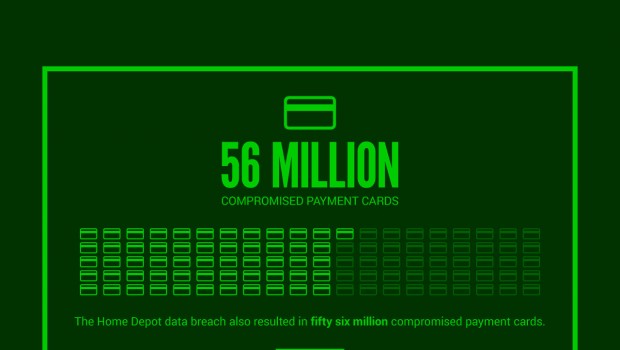2014: Year of the Mega Data Breach
In 2014, data breaches repeatedly made headlines, as major corporations like eBay, JPMorgan Chase, and Home Depot all leaked their customers’ private information. It’s no wonder that each data breach demanded serious press time, given the massive number of companies and consumers affected. The eBay data leak, for instance, reached an estimated 145 million households, while the JPMorgan Chase data breach affected about 76 million people. The JPMorgan Chase incident also impacted about 7 million small businesses.
Many people don’t realize that malware is one of the biggest contributors to data breaches. Since malware can be so insidious, these snippets of code can slowly and quietly steal data from companies over time without detection. In 2014, Michaels leaked data for 11 months until IT professionals discovered malware on the company’s servers. Allowing such long periods to pass before discovery can be devastating for large companies. After five months of data leakage, Home Depot compromised 56 million credit and debit cards.
With the number of people and businesses affected, it’s no surprise that data breaches can be incredibly expensive for many companies. A particularly large Community Health Systems data breach, for example, cost the company up to $150 million, while the extensive Home Depot data breach cost the company more than $60 million in damages. Although these are some of the biggest data breaches of 2014, the average cost per data leak is approximately $3.5 million. Altogether, the U.S. loses about $525 million to cybercrime each year.
Data breaches cost companies much more than fraudulent charges and profit loss. Many affected companies feel the biggest losses in brand value, market image, and reputation, all of which can be expensive to repair. Study this Top Ten Reviews infographic for more stats on some of the biggest data breaches of 2014.
















